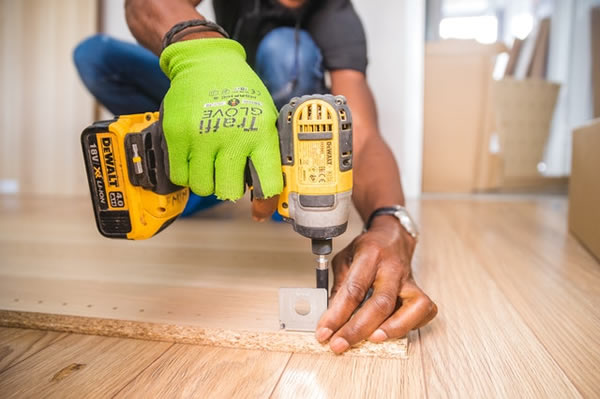
Whether you are planning to sell your home or increase the property’s value, a home renovation is definitely worth the time and money you will be spending. Then again, the cost and effort that goes into a renovation project overshadow the need to reduce the risk of accidents and minimize exposure to health hazards.
Safety should also have an important part in planning a home renovation. To help you out, consider these tips to keep yourself, your contractors, and your family safe throughout the process:
- Determine the scope of the work
- Before anything else, you will need to consider the type of work that’s involved. This is because each task presents a unique safety concern and requires a specific piece of safety equipment.
- Will you be repainting the living room walls? Will you be replacing the material of your flooring? Does the project involve high noise levels? Does it involve the installation of lighting and electrical outlets? Identifying each task that’s included in the project will help you assess potential risks and purchase the right equipment for handling such risks.
- Get a home renovation permit
- For some, getting a permit for doing a home renovation seems tedious and unnecessary. However, permits are important in getting homeowners to comply with local safety standards. Everything from re-roofing to converting entire rooms requires specialized permits. Once you have acquired one, an inspector will evaluate your project to see if it adheres to the safety guidelines.
- If you fail to secure a home improvement permit, a hefty fine is the least of your worries. If there’s no one to assess safety compliance, the risk of accident and injury will run high.
- Gather quality safety equipment
- From simple interior redesigns to major structural modifications, home renovation projects can expose you to a wide array of safety and health risks. Apart from dust and debris, you will also need to protect yourself when you are handling chemicals and tools. During a wall repaint, for instance, you will need to wear a mask and a pair of gloves. If you’re cleaning out the attic, be sure to wear eye protection on top of a dust mask.
- For advanced construction work, consider purchasing personal protective equipment (PPE), which consists of a hard hat, knee pads, and safety glasses. Depending on where you are, you may be required by law to procure PPEs if the project involves major structural modifications.
- It pays to be prepared for anything, including wet floors, falling debris, and toxic chemicals. For your part, you might want to consider getting PPE safety training for DIY projects. With the right guidance, you can lessen the risk of injury and prevent respiratory conditions from developing.
- Cordon off the worksite
- The areas you are renovating should be off-limits except for you and the contractors you employed. It’s important that you set up barriers around the worksite to prevent kids and pets from entering. If you have dogs or cats around, keep them on a leash or inside a room.
- Kids can run around the premises and play with equipment that catches their attention, so it’s best that you set up a space where you can keep them occupied. If the project lasts for more than a week, consider taking the kids to a relative’s home or going on a hotel vacation where they can stay until the project is complete.
- Make sure there’s enough ventilation
- Does your project involve the use of aerosol sprays, paints, and foam insulation? Foam insulation contains a number of cancer-causing chemicals, like formaldehyde, while most paints may contain glycol and benzene that are just as dangerous.
- It’s best to keep the doors and windows open during the process to prevent the build-up of volatile organic compounds (VOCs). As much as possible, you need to make sure the area is fully aerated to prevent these chemicals from settling down.
- Use eco-friendly materials
- Preventing injury is one thing, but keeping yourself safe from the long-run health effects of VOCs is another. If you are looking to purchase construction supplies, like paints and drywall boards, you need to be wary of the source and the material they are made from.
- Depending on the project, you can get around purchasing synthetic materials by purchasing eco-friendly supplies instead. For instance, start swapping out your paints with plant-based ones. If you are doing any woodwork, consider using a natural varnish.
Home renovation projects are worth your while. However, you need to go beyond the excitement of sprucing up your home and consider your safety as you handle the task.
